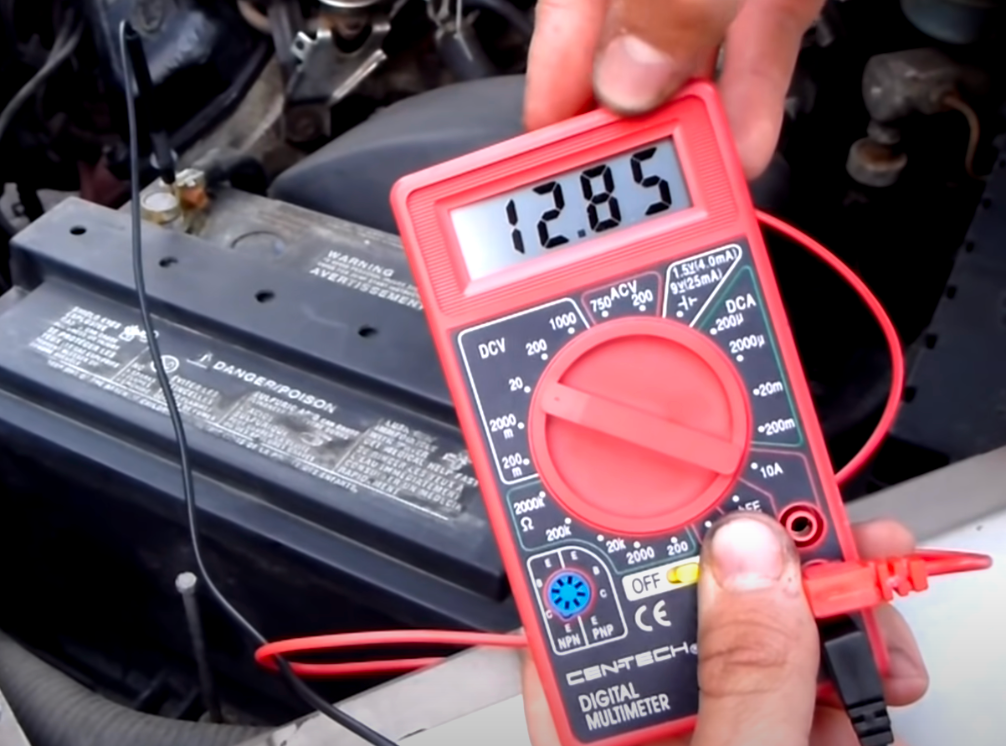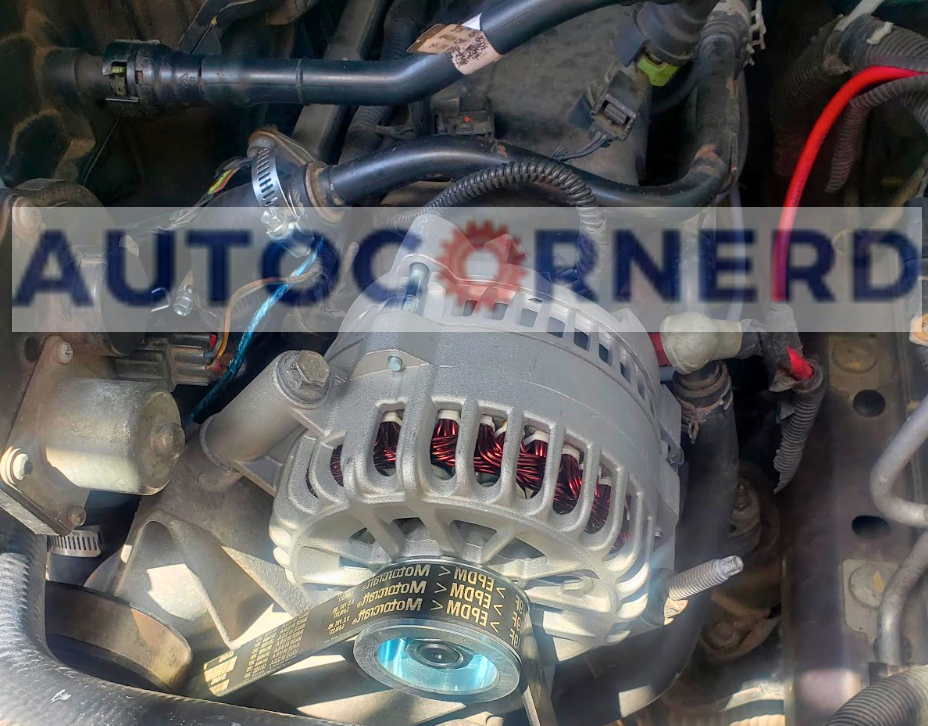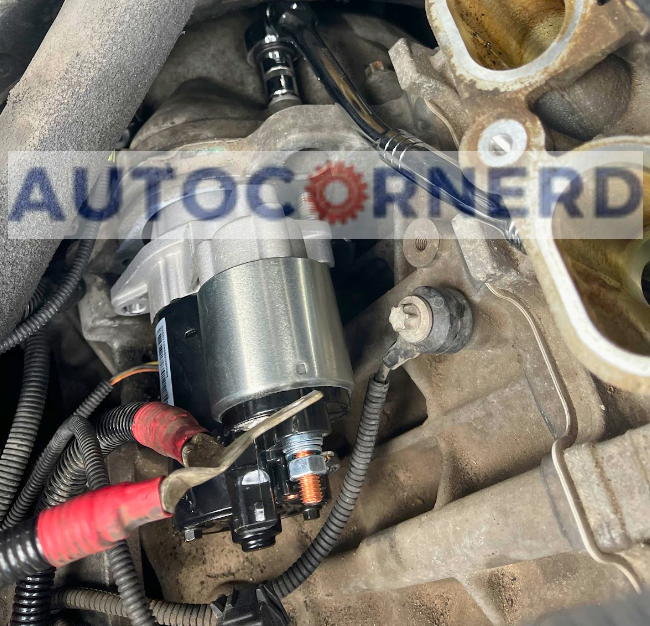Car Won’t Start After Replacing Serpentine Belt: 6 Potential Causes
If a car does not start after swapping the serpentine belt, the alternator, water pump, or idler pulley may be stuck. Everything except for the crankshaft pulley, around which the serpentine belt flows, should turn freely. A seized alternator can stop the engine from cranking. Also inspect the battery and connections – a dead or weak battery may not have sufficient power to start the engine even with an adequate belt. If you do not hear cranking, the starter motor or battery could be faulty.
Replacing a worn serpentine belt is a straightforward maintenance task for most DIYers. But when you install the new belt and turn the key only to be met with an ominous silence, it can be incredibly frustrating. What gives?
As it turns out, there are a few common culprits behind a no-start condition after a serpentine belt replacement. It can be misaligned serpentine belt, a stuck pulley or even a dead battery. In this guide, I will explain different causes of car not starting after replacing serpentine belt.
Want a quick solution? Check out my free virtual mechanic chatbot.
Note: Normally, during the serpentine belt replacement process, we have to disconnect the negative terminal of the battery to avoid a short circuit. So, after the installation of the serpentine belt, make sure you have properly tightened the negative terminal of the battery.
In the last section, I’ve included comments from forums where users share firsthand experiences with car not starting after replacing serpentine belt. Be sure to check out that section for real insights.
Bonus read: You can also check my guide on car starting intermittently.
- Car may not start after replacing serpentine belt due to battery drain, damaged alternator, bad starter motor, disconnected sensors, or improper belt installation.
- Inspect battery voltage and connections. Jump start if drained. Replace if damaged.
- Check alternator pulley spins freely by hand. Use breaker bar to free up seized unit.
- Verify starter motor connections are secure. Tap with hammer to free stuck part.
- Confirm all sensors are plugged in properly after belt replacement.
- Make sure new serpentine belt is same size as old one and is routed correctly around pulleys.
My Personal Experience With Car Not Starting After Changing Serpentine Belt
Once, my neighbor Phil was having trouble starting his 2007 Honda Civic after attempting to replace the serpentine belt himself. He said the engine would crank but not fire up. I went over to inspect and found the MAF sensor connector had come loose, likely while he was working in the cramped engine bay.
After plugging the sensor back in securely, the engine started right up. Phil was relieved we were able to fix it without having to take it to the shop. I advised him to double check all connectors after doing engine work in the future.
What Causes Serpentine Belt To Break Or Get Snapped?
I have come across several instances where the serpentine belt has broken or snapped. This belt is a crucial component for your car’s engine as it helps power several auxiliary systems, including the alternator, power steering pump, and air conditioning compressor.
Here are some of the main reasons why a serpentine belt may break or snap:
1. Serpentine Belt Snapped Due To Engine Component Jamming Tensioner
One of the main reasons a serpentine belt might break or snap has to do with something locking up under the hood. This could be a seized pulley, frozen alternator, or air conditioning compressor that stops working right.
When any of these parts jam up, they force the belt to overwork until it snaps. A faulty water pump can also cause enough drag from the impeller to make the serpentine belt snap.
2. Extreme Heat Snapped Aging Serpentine Belt
The rubber in serpentine belts can fail when exposed to temperature extremes. Remember that serpentine belts are made of rubber compounds.
High heat from the engine makes the rubber expand and shrink. This leads to cracks and tears forming in the belt.
Freezing temperatures turn the belt rubber stiff and brittle. The belt is more likely to snap when it can’t flex as intended.
3. Worn out Serpentine Belt Finally Snapped
The serpentine belt works hard under the hood, constantly bending and twisting to run all your engine accessories like the alternator, power steering pump, and AC compressor. Over time, the punishing heat, cold, coolant and oil drips, and dirt take their toll.
Keep an eye out for signs of a worn belt. Look for cracks or missing chunks in the ribs. Check for glazing or shine which means the belt is hardened. Fraying on the edges is another red flag. As the belt loses suppleness and strength, it becomes prone to sudden failure.
Causes of Car Not Starting After Replacing Serpentine Belt
1. Battery Drained or Damaged After Serpentine Belt Replacement
The serpentine belt is a vital component under the hood. It spins the alternator, allowing it to charge up the battery. When that belt snaps or gets loose, problems start brewing.
Without the spin of the alternator, your battery stops charging. It now needs to power everything electrical alone. That big job drains the battery mighty fast.
A dead battery makes starting up difficult. Turning the key might do nothing at all. However, even a charged battery can fail you. If it is damaged and can’t hold power, your ride stalls or won’t start.
How can you tell if the battery is drained or damaged?

To check if the battery is drained, you can use a voltmeter to measure the voltage of the battery without cranking the engine. A fully charged battery should have a voltage reading of around 12.6 volts.
If you are trying to crank the engine, the battery voltage at that point should not drop below 9.5V. If the voltage reading is significantly lower than this, it means that the battery is drained.
What should you do if the battery is drained or damaged?
If the battery is drained, you may be able to jumpstart the car using jumper cables and another vehicle’s battery. Make sure to follow the proper jumpstarting procedure to avoid damaging your car’s electrical system.
If the battery is still not charged enough, it means the battery is damaged, you have to replace your car battery.
2. Alternator Seized Up Causing No Crank

The alternator and the battery work together to power a car’s electrical system. The alternator charges the battery while the engine runs. It gets spin power from the serpentine belt.
If the alternator gets stuck and can’t spin, it will break the serpentine belt. Now the engine can’t run.
Replacing the belt won’t fix things if the alternator stays stuck. The battery needs recharging from the alternator to start the engine. A seized alternator can’t charge the battery. So the car won’t start up.
Why does an alternator get stuck in the first place?
Not caring for the alternator properly can make it stick. Dirt and dust can build up over time. This can overheat the alternator and damage it. The bearings need oil and grease to spin freely. Old bearings get noisy and hot from friction.
This heat and rubbing can seize up the alternator. Rust can also freeze the alternator. The rust forms because the spinning parts have tiny gaps between them.
When an alternator starts sticking, the serpentine belt gets jerked up and down. This damages the belt.
How to inspect?
If your car won’t start after replacing the serpentine belt, the first thing you should do is remove the serpentine belt and try to turn the alternator pulley by hand. If the alternator is seized up, it won’t turn at all, or it will be very difficult to turn.
How to fix?
To fix a seized alternator, you should put a breaker bar on the nut of the alternator pulley, and try to force it to turn, forward and backward. You can also spray a wicking coil into the winding of the alternator from the pulley side to fix a seized alternator.
3. Starter Motor Is Fried Up

If your car does not even crank over when you try to start it, the problem may be with the starter motor or its connections, even if the battery is fine.
For example, you could have accidentally disconnected the wire to the starter when replacing the serpentine belt. This would prevent the starter from working properly when you try to start the engine.
The starter motor is an electric motor that turns the engine over to get it going. It is mounted on the engine block and wired to the battery and ignition switch.
When you turn the key, the starter spins the flywheel. The flywheel turns the crankshaft, which moves the pistons up and down in the cylinders. This compression allows the spark plugs to ignite the fuel-air mix and start the engine running to power the vehicle.
What causes a starter to fail?
A starter can get damaged from:
- Loose or dirty wires. If the connections between the battery, starter solenoid, and starter motor are loose or corroded, the starter may not get enough electrical current to work. You can read my guide on starter wire connections to learn more.
- Worn or broken internal parts. The brushes, gears, solenoid plunger, and other starter pieces can wear out or break over time from friction, heat, or stress. Any of these issues can stop the starter from spinning or meshing properly.
- Oil leaks. Leaking oil that gets on the starter can damage its electrical parts or cause short circuits. Oil also attracts dirt that can clog and corrode the connections.
If all connections of the starter are fine, you should try hitting the starter with the hammer, and see if your car starts or not.
4. Intake & Vacuum Hoses Dislodged When Replacing Serpentine Belt
When replacing the serpentine belt, you might need to remove some hoses to access it better. This includes the air intake hose and vacuum hoses.
The air intake hose brings fresh air into the engine. It’s shaped like a tube or funnel. The vacuum hoses are small rubber tubes. They connect parts like the intake manifold, fuel pressure regulator, PCV valve, and EGR valve.
If the hoses weren’t put on right the first time, the clamps might be loose. Then the hoses can wiggle free over time. This causes problems.
Loose hoses let vacuum leak. This messes up the air and fuel mix in the engine. Too much air makes the mix too lean. A lean mix keeps the engine from starting. It’ll just crank but not fire up.
Here’s how to check for vacuum leaks:
- Listen close while the engine’s running. A high-pitched hissing sound means a leak. Find where it’s coming from to spot the trouble.
- Pros use smoke machines to find leaks. The smoke sneaks into the intake. Then it shows where it’s escaping. Home mechanics can’t do this, but it finds even hidden leaks.
Another DIY way is using carb cleaner. Spray it around the engine. If the idle speed changes, that spot has a vacuum leak.
5. New Serpentine Belt Improperly Installed
If the serpentine belt is not wrapped correctly, your engine won’t start. A belt that’s too tight or loose indicates the wrong fit or improper installation.
When replacing the serpentine belt, take these steps to avoid mistakes:
- Inspect the old and new belts side-by-side. Verify they match in size and type. Also check the pulleys and tensioner for signs of damage. Worn parts cause premature belt failure.
- Follow the routing diagram in your manual when putting the new belt around pulleys. Incorrect order causes slipping, stretching or breaks.
- Ensure the belt seats fully on each pulley without twisting. Misalignment strains the belt and pulleys.
6. Sensors Disconnected During Serpentine Belt Replacement
While removing the serpentine belt, you might have to tackle with the connections of MAF/MAP sensor, crankshaft position sensor (CKP) and engine coolant temperature (ECT) sensors. Make sure that these sensors have secured connections, and you have not contaminated them.
You should specially check the CKP sensor as it is responsible for the proper ignition timing of the engine.
If the CKP sensor is not working, the ECU couldn’t determine the exact ignition timing. As a result, the car won’t start. You can read my guide on car not starting after replacing CKP sensor.
Final Thoughts
Replacing the serpentine belt in your car can be tricky. Many things could go wrong and stop your car from starting again.
You need to carefully check that:
- The battery cables are tightly connected. A loose battery connection will prevent your car from starting.
- The alternator and starter are not damaged. If they are damaged, your car won’t start.
- All the sensors are plugged in properly. Sensors tell your car’s computer important information. If they are unplugged, your car won’t know what to do.
- No hoses came loose when you replaced the belt. Loose hoses can cause problems.
- The new belt is routed correctly around all the pulleys. If the belt path is wrong, things won’t work right.
- The belt is tightened properly. Too loose and it can slip off. Too tight and it can get damaged.
With patience, go through and double check everything. Fix any issues you find. Then your car should start up fine again after replacing the serpentine belt.
Some First Hand Experiences Shared By Users In Different Communities
Our team conducted research across various online communities, forums, and subreddits to gather user comments and opinions on “car not starting after changing serpentine belt”.
User 1 says:
Faced something similar with my Ford F-150. The issue was not with the belt itself but a disconnected crankshaft position sensor during the replacement process. Reconnected it, and voila, problem solved.
User 2 says:
In my case, on my Chevy Tahoe, it was a faulty belt tensioner. Replaced the belt but overlooked the tensioner’s condition. Had to get it replaced, and that fixed the starting issue.
User 3 says:
I drive a Subaru Outback and had a similar issue. Turned out the new belt was misaligned and rubbing against a pulley, causing extra resistance. Realigned the belt and it started right up.
User 4 says:
Had a perplexing issue with my Hyundai Santa Fe. After belt replacement, the car wouldn’t start due to an unrelated ignition fuse that blew. Replaced the fuse, and the issue was resolved.
User 5 says:
Jeep Wrangler here! After replacing the belt, my car’s start issue was due to a serpentine belt that was the wrong size. Got the right size, and the starting issue disappeared.
User 6 says:
Just to add, with my Dodge Charger, the issue post-belt replacement was a misdiagnosis. The actual problem was a failing starter motor, not related to the belt replacement at all.
